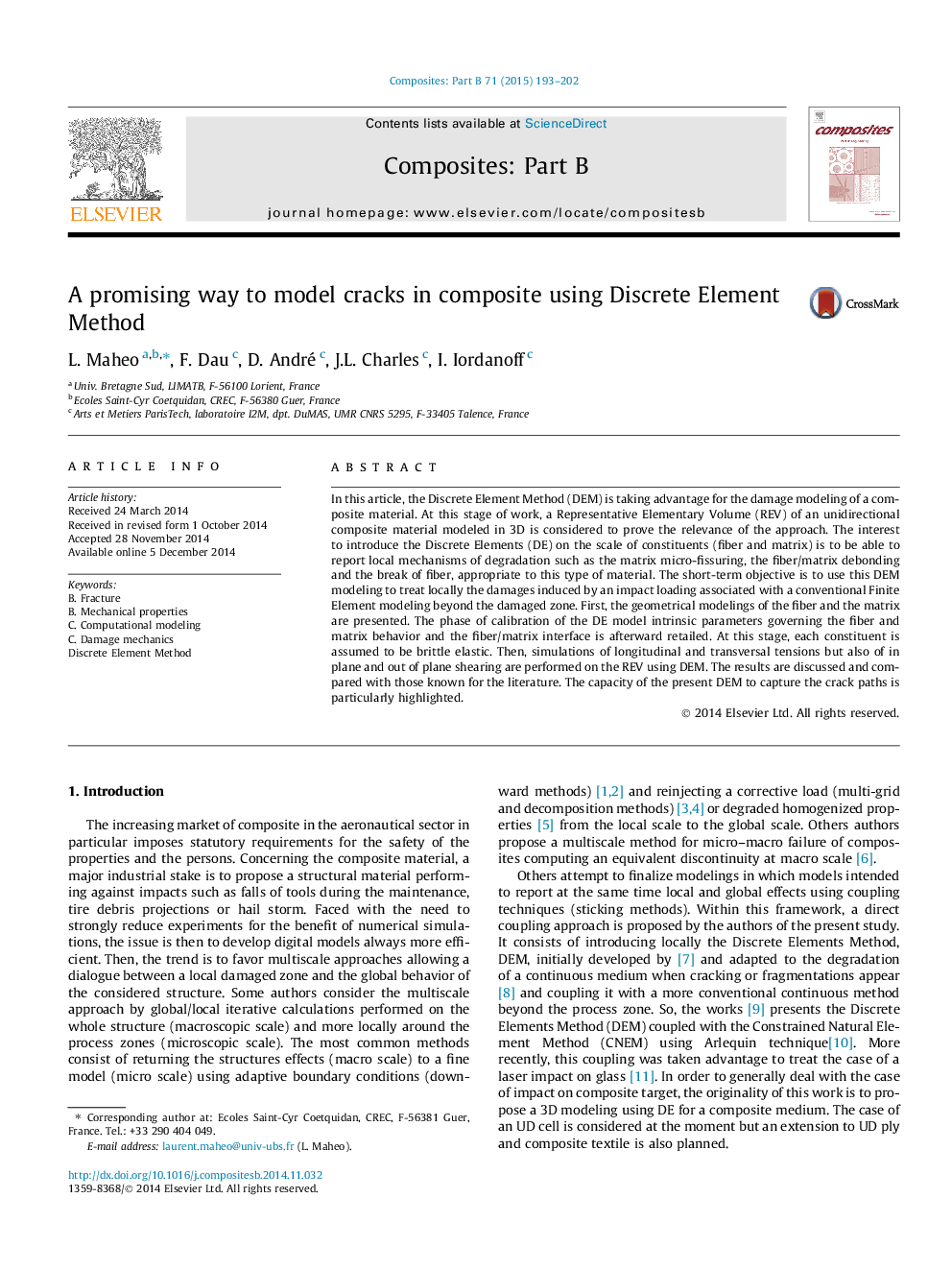| Article ID | Journal | Published Year | Pages | File Type |
|---|---|---|---|---|
| 817513 | Composites Part B: Engineering | 2015 | 10 Pages |
Abstract
In this article, the Discrete Element Method (DEM) is taking advantage for the damage modeling of a composite material. At this stage of work, a Representative Elementary Volume (REV) of an unidirectional composite material modeled in 3D is considered to prove the relevance of the approach. The interest to introduce the Discrete Elements (DE) on the scale of constituents (fiber and matrix) is to be able to report local mechanisms of degradation such as the matrix micro-fissuring, the fiber/matrix debonding and the break of fiber, appropriate to this type of material. The short-term objective is to use this DEM modeling to treat locally the damages induced by an impact loading associated with a conventional Finite Element modeling beyond the damaged zone. First, the geometrical modelings of the fiber and the matrix are presented. The phase of calibration of the DE model intrinsic parameters governing the fiber and matrix behavior and the fiber/matrix interface is afterward retailed. At this stage, each constituent is assumed to be brittle elastic. Then, simulations of longitudinal and transversal tensions but also of in plane and out of plane shearing are performed on the REV using DEM. The results are discussed and compared with those known for the literature. The capacity of the present DEM to capture the crack paths is particularly highlighted.
Keywords
Related Topics
Physical Sciences and Engineering
Engineering
Engineering (General)
Authors
L. Maheo, F. Dau, D. André, J.L. Charles, I. Iordanoff,
